Arthur Charles Wright was one of those who fought in both world wars. Then in 1945 at the age of fifty he settled down and lived another thirty two years in Bottesford, where he died aged 82. Born in the reign of Queen Victoria, he saw the crowning of five monarchs, and the enormous changes by which Britain pulled away from being a world-wide colonial power to becoming part of a more integrated Europe.
Introduction
We are greatly indebted to Dr Rebecca Matthews, Arhur Wright’s grand-daughter, for contributing almost all the pictures and much of the information in this account.
Arthur Charles Wright was born on the 16th March, 1895, baptised on the 11th April at St Leonards, Newark on Trent, son of John Charles Wright and Elizabeth Wright (nee Beech) of No.3, Beacon Hill Road, Newark. His father, Alderman John Charles Wright, was a boilermaker/engineer and partner in the company Abbott & Co based in Newark; he was very committed to the Church and regretted that he lacked the education to be a vicar; he nevertheless involved himself in the Church and was Mayor for Newark (1904/05) and because of his height nicknamed the ‘tallest mayor in England’. His mother, Ann Elizabeth (nee Beech) was born in Louth.
The census in 1911 recorded that the family, still at this address, was comprised of John Charles Wright, a 56 year old company director, and his wife Ann Elizabeth, both in their fifties and born in Lincolnshire, and two sons William John Perkins Wright aged 19, an “engineer’s pupil” born in Nottingham (registration district, which may well have included Newark), and Arthur Charles Wright, aged 16, at school, also born in Nottingham (registration district). His mother died later that year, in December 1911, at the family home in Newark; Arthur was 16 at the time and still a pupil at Magnus Grammar School in Newark.
Arthur left school in 1913 and was a farm pupil when WW1 broke out. He met his future wife, Jane Marston (known as Jeannie), when he went to work on her father’s farm in Norwell; she was the youngest of her five siblings and the only one still at home and was working the farm with her father having herself been one of the first women to attend Agricultural College at Sutton Bonnington.
First World War
When WW1 broke out, both Arthur and his older brother joined up; Arthur was in the Sherwood Rangers (service number 1652) and went with his own horse ‘Solomon’ to serve in the Gallipoli campaign of 1915; he recorded the events in a pocket diary and for part of his time out there he was unwell and taken to the military hospital in Egypt (Photo ACW 1915 in Egypt). He returned from this campaign and tried to join the newly formed Flying Corps but was told that they had yet to build a plane big enough for him – he was 6 foot 7 inches tall.
His service record and WW1 Medal Index Card confirm that he was a cavalryman, service numbers 1652 and 275028. The first service number dates from his time as a Private at UK camp with the Nottinghamshire Yeomanry Sherwood Rangers, from 1912 to 1915, the second was given when he went overseas from April 1915 to July 1917. He then transferred to the Reserve Cavalry Regiment and Cavalry Cadet School, 1917-1918. In August 1918, he was commissioned into the 4th Reserve Regiment of Dragoons (Photo Commissioning 1918 and Service Log x 2) with service number 116787.
He was awarded the 1915 Star in addition to the British War Medal and the Victory Medal.
Interwar Years
After the war ended he married Jeannie (born in 1891 in Bingham) at Bingham Church on the 22nd April 1919 and the newly married couple set up home with Jeannie’s father, Robert Marston, farming together; this was short lived as Jeannie’s father died in December 1919 from the Spanish Flu.
Electoral registers from 1921 to 1925 show that Arthur and Jeannie lived at Newton, near Shelford, in the first part of the 1920s, renting farm land named “The Lawker” on the Fosse Road adjacent to RAF Newton near Bingham. But in 1927 they bought The Ferns – the house and the farm land in Bottesford. Their only child, David Charles, was born the following year in 1928. They had a mixture of livestock – pigs, dairy cows, sheep and poultry – but very definitely horses; Arthur was horse mad and was often given the difficult horses at the hunt stables to ride because his long legs enabled him to manage those horses better than others who were shorter. He had bought the Ferns because of its proximity to the Belvoir Hunt and he was an active supporter both the hunting but also nurturing the hound puppies and my father recalled that regularly fox cubs were delivered to the farm also for care and attention alongside the puppies!
They remained there up to the start of the Second World War. The 1939 Register indicates that they lived on the High St, Bottesford: Arthur C Wright, b.16/3/1895, farmer and grazier, and Jeannie Wright, his wife, b.1/3/1893. Later that year, on the 3rd November, the Journal carried an advertisement for the auction at The Ferns, where “Mr A.C.Wright, who is rejoining the army” would be disposing of his livestock (horses, cattle, sheep, pigs) and farm implements and machinery (Telephone Bottesford 232). They were selling up the farming business, presumably intending to rent out the land and farm buildings while he returned to the army. He was already 44 years old, and by the end of the war he was almost 50 years old.
Second World War
With the prospect of another war in the late 1930’s, he joined the Leicester Branch of the British Legion Volunteer Police (Photo ACW 1938 BLVP) and was set to travel to Czechoslovakia on the SS Naldera before the expedition was cancelled (Letter to his son, David Charles Wright). The party also included another Bottesford man, Ernest Jallands DCM. The visit may have been in connection with international veterans’ celebrations, and had been planned before the outbreak of a new war in Europe was confirmed. The Legion visit was abandoned and the british delegates returned home.
With war increasingly imminent, he sold up his livestock and some of the farm equipment. He had re-enlisted with the rank of Lieutenant, and was ready to leave in command of a salvage unit based near the Maginot Line. He and his men were unaware of the German advance and by the time that they were alerted to the situation there was no chance for them to reach Dunkirk so they headed for the Swiss border. It was not easy. Arthur at 6 foot 7 inches was very noticeable and also injury sustained in his WW1 service to his legs and feet hindered his ability to walk, and so his troop tried to carry him. They sought refuge on a Farm but the French farmer was so agitated that they moved on and whilst Arthur wanted his men to leave him they would not – they were within a half a mile of the Swiss border when they were captured – Arthur was the last British officer to be taken prisoner in the Saar area.
Few records of Arthur Wright’s WW2 service have been located. His service record may be held in the National Archive, but appear not to have been digitised (yet).
It had been arranged that the farm would be rented out to Mr Goodson and that arrangement started in 1940 and continued to the early 1980’s when Mr Goodson’s son-in-law, Mr Lol Pitkin, gave up the tenancy. Jeannie had no idea where Arthur was when he was reported missing in July 1940 (Telegram 1) until at the tail end of August she received another telegram to report him as a Prisoner of War (POW) (Telegram 2). Jeannie had taken up training in 1938, qualifying as a member of the Air Raid Precautions (ARP) Service (certificate) and whilst she continued with poultry farming, principally co-ordinated the Land Girls on the Bottesford farms.
Arthur spent time in four POW camps (their locations marked on the Red Cross POW Camp Map): Oflag VIIc Laufen (1940 to 1941), followed by Oflag VIb (1941 to 1942) before being moved to OflagIX a/h (1943 to 1944) and finally to Oflag IX a/z till he was liberated by the Americans on Wednesday 4th April 1945 (Telegram). He gained the nickname ‘Captain Tiny’ in recognition of his height. He never attempted to escape because his height would have compromised the successful escape chances of others but he was a look out for those digging tunnels because he could look over the huts rather than peering round. He learned some German (photo)and also the euphonium as part of the POW camp orchestra and with time on his hands bought a Rolex watch (photo) which he wore till his death in 1977.
There is a record in the Prisoners of War 1715-1945 database (Find My Past) which records Lieutenant A.C. Wright, service number 116787 in the General List, Prisoner number 1538 at Camp number 09 A/Z. This indicates camp A/Z in Military District 9 (Hesse), Oflag IX A/Z, a POW camp at Rotenburg an der Fulda in the state of Hesse. Note that ‘Oflag’ denotes an officers’ camp (as opposed to Stalags, which were for other military prisoners), and the ‘Z’ indicates that it was a sub-camp (in effect an overspill camp) in support of the main camp IX A/H at Spandenberg Castle, also in Hesse. The Rotenberg camp was located in a baroque palace which had housed a school, the Jacob Grimm school for girls, before the war. It was destroyed by bombing at the end of the war, fortunately after the prisoners had endured a forced marched further east during late March to early April 1945, ending in their liberation at Wimmelburg.
A prewar photograph of Rotenburg Castle has been published online by the National Library of New Zealand. In addition, one of the inmates, Lt Leighton McLeod ‘Lee’ Hill of the New Zealand Expeditionary Force, took photographs of the prisoners’ forced march: images now held by the Imperial War Museum website and also in the Turnbull collection, New Zealand. An excellent account of the history of the camp has been published online by Peter Green, son of Alan Green, one of the prisoners:
https://oflag1945.files.wordpress.com/2011/01/newsletter1-1.pdf
There are more records for AC Wright 116787. A Casualty List records: Wright, 2nd Lt, A.C. 116787 General List, missing believed prisoner of war. Another states: Wright A.C. 2nd Lt 116787 Expeditionary Force France. Another refers to him as 116787 Royal Army Medical Corps. Finally, a Casualty List produced in 1945 refers to A.C. Wright, rank W/Lt (what does the W indicate?), captured in France, previously POW in German Hands (Germany) now not POW.
He had joined up late in 1939 as Lieutenant Wright, the rank he held through his imprisonment. However, on return to civilian life he was Captain Wright, indicating that he had received his long delayed promotion. Between 1950 and 1954 he was further promoted to the rank of Major, and is still remembered as Major Wright today.
On returning back to the UK he was welcomed back by Councillor & Mrs Roberts in Grantham (Margaret Thatcher’s father) before arriving back in Bottesford to be greeted by Jeannie and the farm sheepdog (JW Photo) who had throughout the war visited the railway station every day to wait for his master to return – when Arthur had gone war in 1939, he left from Bottesford station and that was why the dog returned there every day; the daily trek to the station continued after his master’s return as by then he had made many friends with the station staff and regular train commuters who supplemented his diet with titbits and biscuits.
An article in the Grantham Journal, 20th July 1945, “A Real Welcome Home“, describes a function held on the Rectory lawn in Bottesford in which Canon Blackmore welcomed back three Bottesford men who had been Prisoners of War, one of whom was Captain A.C. Wright “captured in France just after Dunkirk” (the other two were Gunner Fred Greasley (Tobruk) and Gunner Ernest H. Philpotts (Crete)). An earlier article described how the Legion had welcomed their chairman, Captain A.C. Wright, who gave a graphic account of his five years a POW, but sadly this account has not been preserved.
In the Grantham Journal
During their years in Bottesford both Arthur and Jeannie Wright led active social lives and served on a diverse array of committees around the Grantham and Bottesford area, as captured in the pages of the Grantham Journal. These are a selection of some of the records of them:
26/2/1926 Nottingham Wool Sale – sellers included Mr A.C. Wright (Newton).
4/11/1927 A.C. Wright represented Nottingham Corporation Farm in a demonstration of new farm machinery held at Fiskerton.
16/6/1928 Farmer’s Union Meeting held in the School at Bottesford included A.C. Wright (Bottesford)
18/1/1930 A.C. Wright, vice-chairman of the Bottesford & Muston Conservatives Association, attended their annual dinner at the Bull Hotel
8/11/1930 One of the 42 members of the Grantham Officers was Lieutenant A.C. Wright, 4th R.R. Dragoons, at an event for a Proposed Memorial for Lord Brownlow.
29/10/1932 A.C. Wright in a whist drive at Bottesford
21/4/1934 A.C. Wright was Vice-Chairman of Bottesford Parish Council and on the Allotments Committee
3/11/1939 auction of stock and implements by Mr Wright of The Ferns
15/12/1939 A.C. Wright elected chairman of the Bottesford & Muston British Legion
6/9/1940 Mrs A.C.Wright, “The Ferns”, Bottesford, wishes to thank the many friends for their kind enquiries relating to her husband, Lieutenant A.C.Wright, who was reported missing on June 14th and is now a prisoner of war.
1/11/1940 A.C.Wright was listed in absentia as a committee member of the Grantham and District Agricultural Association, patron Duke of Rutland, president Lord Brownlow.
19/5/1944 Belvoir Coffee House – the committee assembled in the move to bring about a reopening as a Bottesford Sociel Centre included Mrs A.C.Wright.
18/5/1945 Legion Welcomes Chairman – Capt. A.C. Wright, after five years a POW, gave a graphic account of his experiences.
18th May 1945 … Captain Wright (a prisoner of war for 5 years) spoke and gave each child a shilling. He then lit the bonfire and parents and children sang and danced. (Website page 7/5/2015 by Sue Middleton).
On the 20th July 1945, the Grantham Journal described a function on the Rectory lawn in Bottesford, at which Canon A.T.G. Blackmore gave an address, “A Real Welcome Home From The Church at Bottesford to Four Prisoners of War”. The four were: Private Ernest Greasley (Border Regiment) taken captive at Arnhem; Gunner Fred Greasley, captured at Tobruk; Gunner Ernest H. Philpotts, taken prisoner in Crete; Captain A.C. Wright, captured in France just after Dunkirk.
GJ 16/11/1945 Canon Blackmore read out a list casualties (but not including Bert Turner). He also mentioned Capt A.C.Wright, returned POW.
24/1/1947 “Christening of Bottesford’s first Village Hall”. A temporary building, as bricks were needed for houses. Formerly belonging to Elton WI, erection supervised by Horace Doubleday. Freda Lane & partner won the “spot waltz” competition; an iced cake was given by Mrs A.C.Wright and won by Mr Derrick Doubleday, and a novel item won by Capt. A.C. Wright.
14/3/1947 An article indicates that Captain A.C. Wright of Bottesford was Worshipful Master of the Doric Lodge
21/4/1950 Bottesford church council included Captain A.C. Wright.
24/9/1954 Major A.C. Wright, sidesman, and Mrs Wright attended the funeral of George Ernest Marsh, a prominent Bottesford farmer.
23/10/1959 Mr and Mrs A.C. Wright sent flowers for the Golden Wedding anniversary of Mr and Mrs Bolland.
Arthur did not return to farming and instead took up a short service commission – his role was surveying and valuing damage as a result of army exercises/manoeuvres and this took him away from Bottesford. He was promoted in 1953 to the rank of Major and transferred from the Royal Armoured Corps (RAC) to the Royal Tank Regiment (RTR) (ACW Photo) and retired from the army in 1956. He had a collection of 7 medals for his army service (Photo) He was known in his family from then on as ‘the Major’. He like his father before him involved himself in his local community – church warden at St Mary’s. He suffered with a number of strokes and his height which had been a distinguishing advantage earlier in life was now a handicap as Jeannie who was 4 foot 11 inches and Dolly the housekeeper, equally short in stature, could not pick him up when he fell. He was moved to Grantham Hospital and died there on the 9th July 1977. He was cremated and his ashes interred at Grantham Cemetery,
At first, Jeannie lived on at The Ferns after he died. Mrs Peggy Topps recalls that she once did dressmaking for Mrs Wright. She recalls calling at the rear door, through the farm yard at the rear of the house, and being met by Mrs Wight’s maid, Dolly Waterfield, who then took her through very formally to meet the lady of the house. However, Jeannie moved to live in a bungalow in The Paddocks still in Bottesford and near to friends. The bungalow was a more practical and manageable size. Dolly moved with her and after Jeannie died in March 1979, Dolly continued to live at The Paddocks; after an unsuccessful knee operation, she moved to a care home and died in March 1992 – she is buried in St Mary’s churchyard. Jeannie like her husband was cremated and her ashes also interred in Grantham Cemetery.

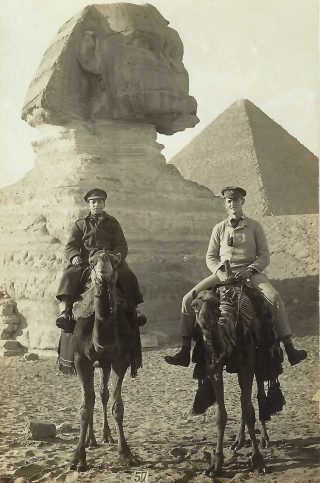
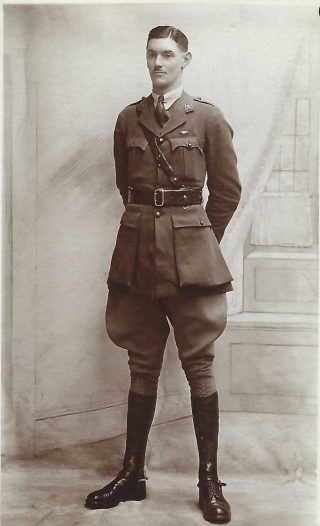
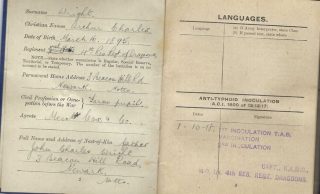
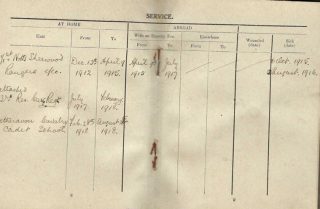
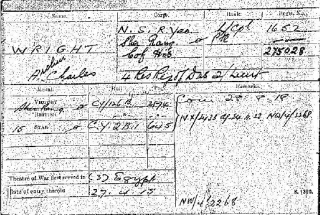
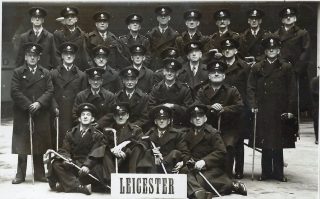
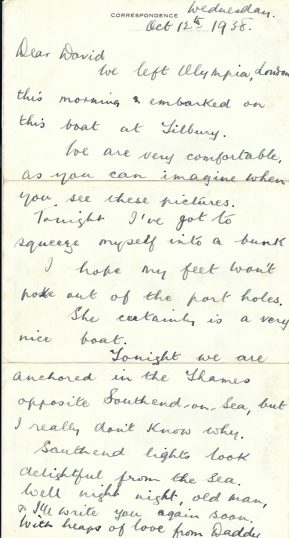
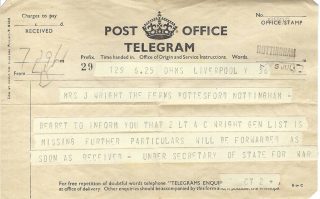
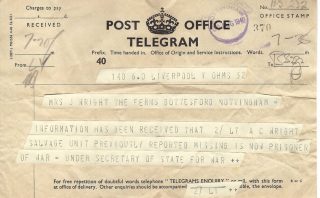
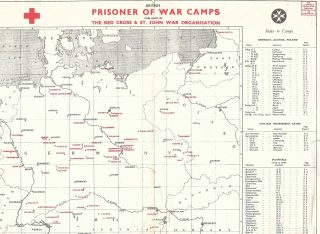
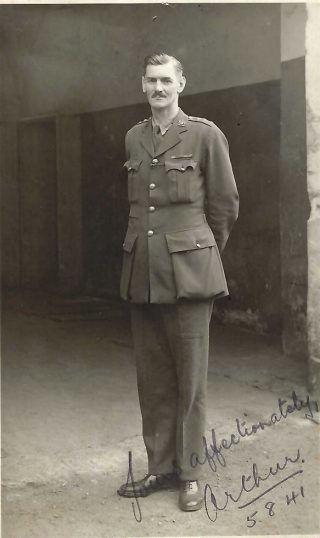
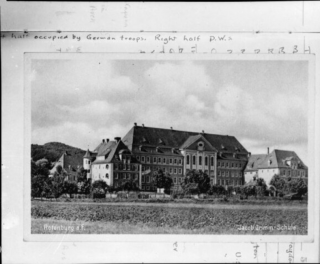
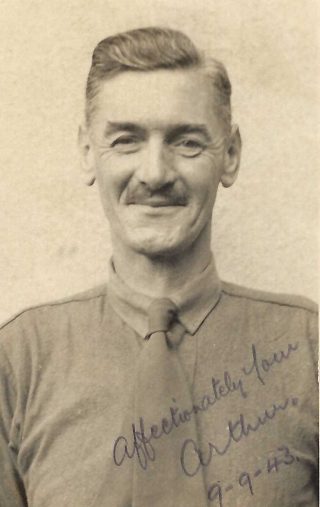
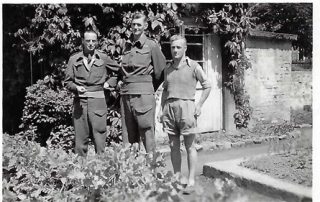
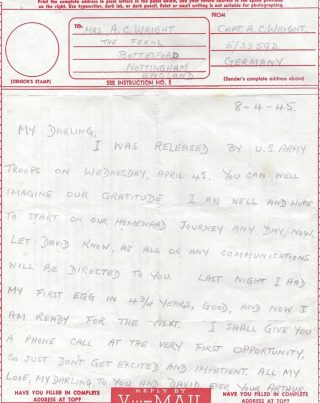
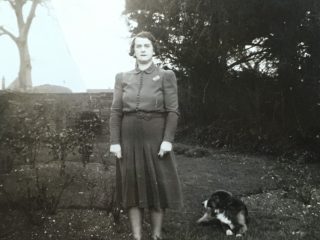
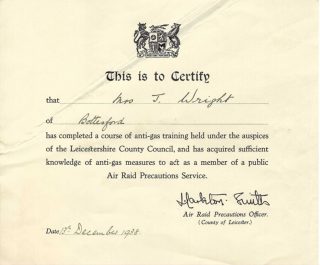
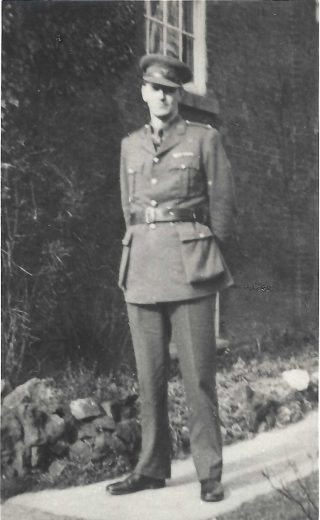
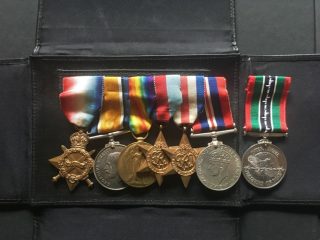








Comments about this page
Another very interesting article, thank you Neil.
By coincidence, for another project a couple of years ago I also researched a man who was held as a PoW at Oflag IX A/Z (Rotenburg an der Fulda) and noted a couple of their fellow prisoners who gained later celebrity. Captain “Jim” Lubbock was with the Leicestershire Regiment unit that landed in April 1940 at Namsos near Trondheim as part of Sickle Force, intended to cut short the Nazi invasion of Norway. The operation failed and Lubbock was one of six officers captured on the 2 May.
My notes go on:
“In due course Captain Lubbock would be held at the PoW camp Oflag IX/A/Z near Rotenburg an der Fulda, Hesse. One of his colleagues there was the actor Desmond Llewellyn (Lt, Royal Welch Fusiliers), captured in Northern France and later to play the role of Q in the James Bond movie franchise. … His liberation would be slow and tiring in coming.
As the allies advanced into Germany in March 1945 the camp orderlies were ordered to move the prisoners east to prevent them re-joining their own forces. The men were forced to leave the camp on the 29 March and, carrying a few belongings on old prams and handcarts, they made their way by foot over several days to Muhlhausen where they were put onto a train to Bavaria. They had been joined along the way by PoWs from a sister camp, Uflag IX A/H at Spangenberg including the then Captain Bruce M H Shand, MC, whose daughter Camilla would later marry Prince Charles to become the Duchess of Cornwall. Each night, the marchers were shut into barns where they were given meagre rations. By the 12 April they completed a further march to Wimmelburg, some 110 miles from where they had started. But by then the American troops were close behind and the panicking German guards released and abandoned their captives. On the 13 April the Americans arrived to give much needed medical care to the exhausted but relieved men and within days the freed soldiers were flown home.”
Dear Bill,
Many thanks for your comments and additional information. Speaking of other POWs, there is a list of notable prisoners from IX-A/H at Spandenberg on Wikipedia: https://en.wikipedia.org/wiki/Oflag_IX-A/H. One was Pilot Officer Anthony Barber, future Chancellor of the Exchequer. There were also a number who later escaped from Colditz, one of whom was Lieutenant Airey Neave RA, who would become an MP and who in 1979 was killed by a car bomb as he left the Palace of Westminster.
With best wishes, Neil
Add a comment about this page